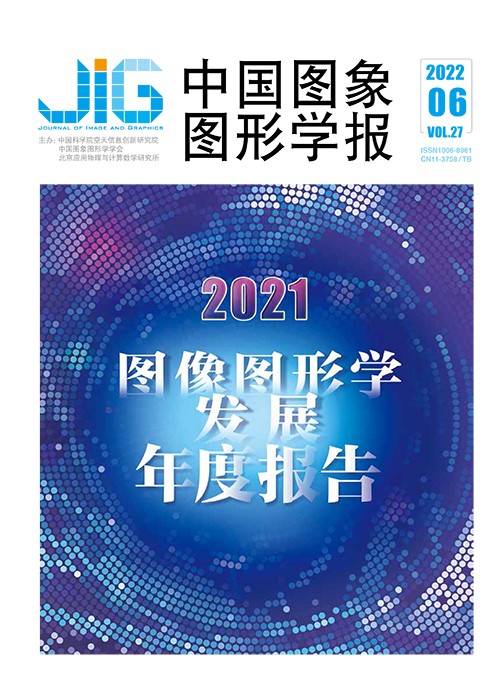
多媒体隐写研究进展
张卫明1, 王宏霞2, 李斌3, 任延珍4, 杨忠良5, 陈可江1, 李伟祥3, 张新鹏6, 俞能海1(1.中国科学技术大学网络空间安全学院, 合肥 230027;2.四川大学网络空间安全学院, 成都 610207;3.深圳大学广东省智能信息处理重点实验室及深圳市媒体信息内容安全重点实验室, 深圳 518060;4.武汉大学国家网络安全学院, 武汉 430072;5.清华大学电子工程系, 北京 100084;6.复旦大学计算机科学技术学院, 上海 200438) 摘 要
大数据分析可以跳过数据内容而仅从数据背景挖掘情报,传统的加密通信已经难以满足安全通信的需求。隐写技术是将秘密消息嵌入各种载体(如数字图像、音频、视频或文本)中实现隐蔽通信的技术,是应对大数据情报获取的有效手段,是密码技术的必要补充。人工智能,尤其是深度学习,在计算机视觉、语音和自然语言处理等领域的巨大成功,给隐写术带来了新机遇,提出了新挑战,促使基于图像、音/视频和文本的隐写术出现了一系列新思想、新方法。本文介绍隐写术的概念、分类、主要作用和研究意义,概述隐写术的发展历史、研究近况和应用场景。注意到各类载体上的隐写术虽然有差别,但是其核心追求有共通之处,可以提炼成通用的隐写编码问题。所以本文首先介绍隐写编码的基本思想与关键技术,然后针对最重要和流行的载体、图像、视频、音频和文本,分别介绍隐写术的进展。总体而言,本文从隐写编码、图像隐写、视频隐写、音频隐写和文本隐写5个方面概述隐写术的国际/国内发展现状,总结差异,对比优势和劣势,并分析发展趋势。
关键词
Overview of steganography on multimedia
Zhang Weiming1, Wang Hongxia2, Li Bin3, Ren Yanzhen4, Yang Zhongliang5, Chen Kejiang1, Li Weixiang3, Zhang Xinpeng6, Yu Nenghai1(1.School of Cyber Science and Technology, University of Science and Technology of China, Hefei 230027, China;2.School of Cyber Science and Engineering, Sichuan University, Chengdu 610207, China;3.Guangdong Key Laboratory of Intelligent Information Processing and Shenzhen Key Laboratory of Media Security, Shenzhen University, Shenzhen 518060, China;4.School of Cyber Science and Engineering, Wuhan University, Wuhan 430072, China;5.Department of Electronic Engineering, Tsinghua University, Beijing 100084, China;6.School of Computer Science, Fudan University, Shanghai 200438, China) Abstract
Big data analysis can skip the data content and mine intelligence from the data context, therefore encryption cannot meet the requirement for secure communication. Steganography is a technique to embed secret messages in various covers (such as digital images, audio, video or text) to achieve covert communication, which is an effective method to cope with big data intelligence acquisition and a necessary complement to cryptography. The advances of artificial intelligence, especially deep learning, in computer vision, speech and natural language processing in recent years have brought new opportunities and challenges to steganography, prompting a series of new ideas and methods in image, audio and video, and text steganography. This paper will introduce the concept, classification, main role and research significance of steganography, and outline the development history, research status and application scenarios of steganography. It is noted that although there are differences in steganography on various covers, their core pursuits have commonalities, which can be refined into general steganographic coding problems. Therefore, this paper will first introduce the basic ideas and key technologies of steganography, and then introduce the progress of steganography for the most important and popular covers, including image, video, audio and text. According to the development of steganographic coding, it can be divided into coding problems under five cost models:constant cost, two-level cost, multi-level cost, non-binary cost, non-additive cost. The coding efficiency and security have been greatly improved. With the effective steganographic coding methods, the focus of research turns to how to define the distortion introduce by embedding message. As for image steganography, this paper reviews model-based steganography, natural steganography, side-information steganography, adversarial steganography. The confrontation between steganography and steganalysis is getting fierce. The distribution of cover image is better preserved. Video is composed of multiple images, so image steganography can be directly used in the spatial domain of video. However, the video will always be compressed to save storage space and the steganography on the compression domain of video is more practical. Many motion-vector based video steganographic schemes have been proposed, which also benefit from the development of steganographic coding. Deep learning based video steganography is a more straight way for embedding messages, which can be also robust to loss video processing, such as recompression, cropping, Gaussian filtering. There are also quite a number of video steganographic tools on the internet, e.g., OpenPuff. Audio can be seen as a part of video, and audio steganography can be divided into time domain and compression domain as well. The audio steganography has its own character, like echo hiding. Since the audio synthesis is very powerful and popular used, some generative audio steganography methods have also been proposed and show superior performance. Previous mentioned mediums will be easily lossy processed, while text seems to be more robust. Text steganography can be divided into format-based steganography and content-based steganography. Content-based steganography is more popular, where generative linguistic steganography shows strong vitality. The international and domestic development status of steganography from five aspects are separately summarized. The advantages and disadvantages of international and domestic development are compared. With these comparisons and corresponding analysis, we also give the development trend from five aspects:steganographic coding, image steganography, video steganography, audio steganography, and text steganography. Better error correction codes are promisingly transferred to better steganographic codes. Robust image steganography is an urgent need, because lossy operations are adopted on online social networks. Fast video steganography is also a potential direction since livestreaming and short-video are current hot spots. Latent codes edition is a direction of improving the performance of generative steganography. In a nutshell, this paper reviews steganography on multimedia and gives future directions of different aspects.
Keywords
|



 中国图象图形学报 │ 京ICP备05080539号-4 │ 本系统由
中国图象图形学报 │ 京ICP备05080539号-4 │ 本系统由